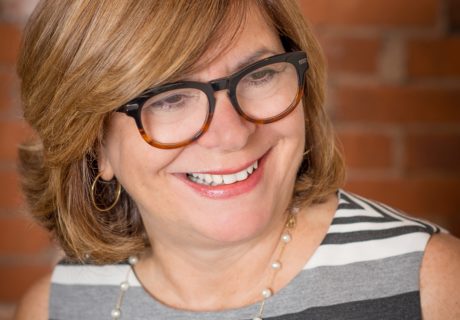
Healthcare Design interviewed four leading product designers who shed light on the healthcare challenges they’re working to solve and the inspiration that guides them. Here, Rosalyn Cama from Cama Inc. and Cama Collection LLC shares her story.
 Position: president, Cama Inc.; CEO, Cama Collection LLC
Position: president, Cama Inc.; CEO, Cama Collection LLC
Location: New Haven, Conn.
Years working in design: 44
Years in current role: 36 at Cama; 5 at Cama Collection
Product categories: seating, textiles, and privacy screening
Market segments: healthcare
Healthcare Design: Share a little about your professional background and what drew you to a career in design.
Rosalyn Cama: I received a Bachelor of Science degree in interior design and textiles from the University of Connecticut. Soon thereafter, I was employed by Yale-New Haven Hospital to work as an on-staff designer in the planning and construction of a replacement bed tower. It was not a planned career path; I happened upon this opportunity as I was preparing to apply for a Master in Architecture degree (which was clearly forfeited, as this six-year position taught me how a hospital is designed and built from the client’s vantage point). It was this position that shaped my passion to design environments where design provides an unintended consequence. These spaces were expected to function but not necessarily improve the care delivery experience.
How did you become interested in product design, specifically?
I learned early in my career that if something was not readily available in the marketplace, then I could go outside of my sector for a solution, like Scandinavian wooden furniture sources, or collaborate with a local workroom and customize a solution. We had great upholstery workrooms just outside the New York marketplace, and in the late ‘80s Cama Inc.custom-designed a sprung sleep banquette for a children’s hospital. It was then that I started a file on missing products that I sought for my projects that could not be customized—my file name was “Admitted Designs.”
Tell us about your current role.
I like to say Cama Inc. is a powerful design think tank with a social consciousness. For me, it was never about growing into a large studio to build billings; it was about attracting the most insightful designers to work with the most enlightened clients. Because of that, we’ve been able to attract the right work in three ways: as a studio to design interiors alone or as adjunct to a larger, multidisciplined team; as a lab to develop vision and subsequent program outcomes for projects that align a client’s project vision; and, most recently, as a developer of product that offers design teams solutions for unmet needs that time- and cost-sensitive projects can no longer afford to customize.
Describe the first time you worked on a healthcare product. What did you learn from that process/experience?
In a formalized product development process, that journey started with Fabio Delmestri at IOA Healthcare Furniture. Fabio is an industrial designer, and I had a product design idea (sitting in my Admitted Design file for close to 30 years). My insecurity in this process was overcome by the work my staff and I conducted to clearly articulate our “why”—we wanted to answer a repeated request we heard from mothers who wanted to get into a patient bed with their children. In a Lean-inspired kaizen process, we asked ourselves “why?” several times, ultimately identifying that the action of touch can turn the threat switch off in our brains. We wanted to allow a person to hold a loved one’s hand, even as that person is tethered to a headwall in a large and clumsy hospital bed.
We wrote a white paper and developed a slide deck to sell the concept to IOA. They, too, lead from a big heart, and Fabio said, “Let’s do it!” After two years of developing and refining, the Cama Bed-Chair was received with great acclaim and tears of appreciation. What I’ve learned is to get our question right and know that we’re not solving a problem with a “what” or a “how” but rather with a “why.” That why has to define an improved outcome, not an object.
How is healthcare different from other sectors?
It really isn’t. Designing for a healthcare facility is designing for the human condition at its most compromised state of being. One must be cared for by a highly technical and physically challenged support staff 24/7. Therefore, hospitals are cities with emergency management in full swing; they are residential, hospitality, retail, food service, education, and spiritual retreats all rolled into one.
What challenges do you frequently hear from clients, and how are you working to solve them?
The most frustrating portion of our job right now is the cost constraints and the speed of delivery of most projects. We as a profession are hard-pressed to make a difference on any one project. The time duration from big idea to ribbon-cutting was typically nine years but has now been condensed to six, and the desired lifespan of a building remains 40 years despite technology advancing at such a speed that on opening day the facility is approaching obsolescence.
This is exactly why we’re working on broadening the Cama Collection. The innovation needed is identified in our lab, where the right questions are revealed. The research and development for solutions can’t happen in a tight project schedule, so we move it to the manufacturers where we can work together to develop product never offered in mass before. Then each design studio has an innovative solution that extends the reach and lifespan of their newly designed facilities.
What is the biggest healthcare-related issue on your radar right now and why?
Our biggest challenge is balancing the theater of care delivery. It’s a bit of a three-ring circus that has to be delicately balanced. The design of the built environment must hold the patient and family in high regard, as without a patient there is no industry. Patient needs must be nurtured to a state of health as quickly as possible by an effective and efficient clinical team that has to be supported by a supply management system that anticipates the staff’s needs and the individuality of the patient and their families. When well-balanced, the system creates the best possible outcomes—even if it is a death.
What inspires you? Give us a snapshot of your creative process.
It really takes an informed client to allow us to do our best work, whether an architectural firm, a hospital administrator, or a product manufacturer. It’s through them that we meet those less fortunate who truly benefit from our knowledge and skill. The chronic need missing a solution is where the real inspiration is triggered. At Cama Inc., we use storytelling to get users to identify their issues in a future state, not a current state. Then we rely on a long list of trusted advisers and thought-leaders in many fields to bring open-minded solutions that work within industry standards and project constraints.
Most people don’t understand that, for better or worse, their experiences in life are designed by others. Cama shares our learnings as we would like all who design to be informed on how to achieve the next/best human-centered outcomes.
Is there one healthcare product you’ve designed that stands out to you?
Definitely the IOA Cama Bed-Chair. It gave us permission to take an industrial design approach to problem-solving. It has opened many doors that we are excited to walk through.
What do you hope to have the opportunity to design in the future?
We hope to build a broader awareness that design is a prescription for the human experience of health and well-being. We’ll do so in how we present our projects, our knowledge, and our product’s improved outcomes.
Jennifer Kovacs Silvis is editor-in-chief of Healthcare Design. She can be reached at jennifer.silvis@emeraldexpo.com.
from HCD Magazine https://ift.tt/38iMpM5
via IFTTT

No comments:
Post a Comment